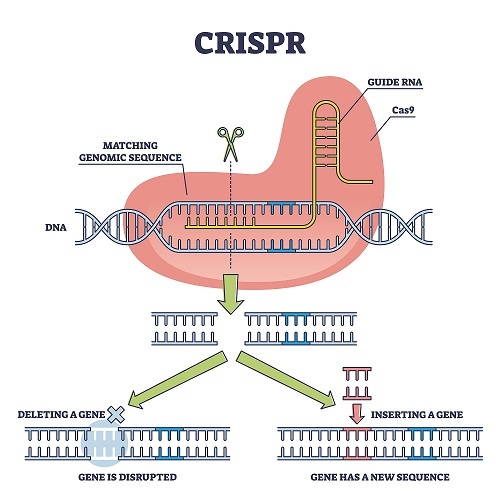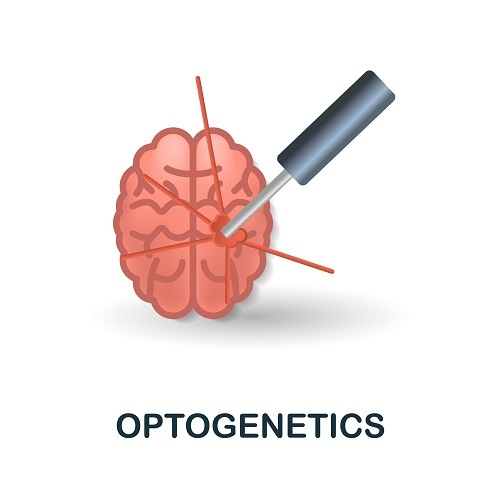
 Data Structure
Data Structure Networking
Networking RDBMS
RDBMS Operating System
Operating System Java
Java MS Excel
MS Excel iOS
iOS HTML
HTML CSS
CSS Android
Android Python
Python C Programming
C Programming C++
C++ C#
C# MongoDB
MongoDB MySQL
MySQL Javascript
Javascript PHP
PHP
- Selected Reading
- UPSC IAS Exams Notes
- Developer's Best Practices
- Questions and Answers
- Effective Resume Writing
- HR Interview Questions
- Computer Glossary
- Who is Who
Advanced Molecular Techniques and What Are the New Molecular Tools Used?
Introduction
Advanced molecular techniques have revolutionized the way we study and understand living organisms. These techniques enable scientists to manipulate and study molecular structures and interactions with a high degree of accuracy and precision.
The field of molecular biology has seen incredible progress in recent years, with new molecular tools and technologies being developed at an unprecedented pace. In this article, we will explore the latest molecular techniques and tools that are being used to explore the molecular world.
CRISPR-Cas9 Technology
CRISPR-Cas9 is a revolutionary genome editing technology that has changed the landscape of molecular biology research. This tool allows scientists to precisely edit the DNA sequence of living organisms. The CRISPR-Cas9 system is based on the natural immune system of bacteria, which uses CRISPR (Clustered Regularly Interspaced Short Palindromic Repeats) and Cas (CRISPR-associated) proteins to target and destroy invading viruses.
In CRISPR-Cas9 technology, a guide RNA is designed to match a specific DNA sequence in the target organism. The Cas9 protein then cuts the DNA at the targeted site, which triggers the cell's natural DNA repair mechanisms. This allows scientists to add, delete or replace specific DNA sequences with great accuracy and specificity.
The potential applications of CRISPR-Cas9 technology are vast and varied. It has already been used to develop new treatments for genetic diseases, engineer crops to be more resistant to pests and disease, and even create new materials with unique properties.

Single-Cell Sequencing
Single-cell sequencing is a molecular technique that allows scientists to analyse the genetic material of individual cells. This technique has opened up new avenues for understanding the complexity of biological systems at a cellular level. Traditional sequencing techniques rely on bulk samples of cells, which can mask the genetic heterogeneity of individual cells.
Single-cell sequencing involves isolating individual cells and amplifying their genetic material for sequencing. This technique can reveal the genetic differences between cells within a tissue, which can provide important insights into the development and function of biological systems.
Single-cell sequencing has already been used to identify rare cell populations, characterize tumour heterogeneity, and study the development of complex organs such as the brain.
Nanopore Sequencing
Nanopore sequencing is a new molecular technique that enables real-time, high-throughput sequencing of DNA and RNA molecules. This technique is based on the use of nanopores, which are tiny holes in a membrane that allows individual nucleotides to pass through.
As the DNA or RNA molecule passes through the nanopore, it causes a change in the electrical current, which can be detected and used to determine the nucleotide sequence of the molecule. This technology has the potential to revolutionize DNA sequencing, making it faster, cheaper, and more accurate.
Nanopore sequencing has already been used to sequence the genomes of bacteria, viruses, and humans, and has been used to identify genetic mutations associated with diseases such as cancer.
Optogenetics
Optogenetics is a molecular technique that allows scientists to control the activity of individual cells using light. This technique involves genetically engineering cells to express light-sensitive proteins, such as opsins, which can be activated by specific wavelengths of light.
By shining light on specific cells, scientists can control their activity and study their function in real-time. This technique has been used to study the neural circuits of the brain, control the activity of immune cells, and even manipulate the behavior of animals.
Optogenetics has enormous potential for the development of new treatments for neurological disorders, such as Parkinson's disease and epilepsy.

Proteomics
Proteomics is the study of the entire complement of proteins expressed by a cell, tissue or organism. This field has expanded rapidly in recent years, driven by advances in mass spectrometry and protein sequencing technologies. Proteomics can provide insights into the molecular mechanisms underlying disease and can be used to identify new therapeutic targets.
One of the key challenges in proteomics is the sheer complexity and diversity of the proteome. The human proteome is estimated to consist of more than 20,000 different proteins, with a wide range of chemical and physical properties.
To overcome this challenge, proteomics researchers have developed a range of techniques for separating and analysing proteins. These include gel electrophoresis, liquid chromatography, and mass spectrometry.
Mass spectrometry is a particularly powerful technique for analysing proteins, as it allows researchers to identify and quantify individual proteins in complex mixtures. This technology has been used to study the proteomes of cells, tissues, and organisms, and has led to important discoveries in areas such as cancer biology and drug development.
Gene Editing with Base Editors
While the CRISPR-Cas9 system has revolutionized genome editing, it is limited by the fact that it relies on the cell's natural DNA repair mechanisms to introduce changes to the genome. This can lead to unwanted mutations and other off-target effects.
To overcome this limitation, researchers have developed a new class of genome editing tools known as base editors. These tools allow scientists to precisely modify individual nucleotides within the DNA sequence, without introducing double-stranded breaks or relying on the cell's natural repair mechanisms. Base editors work by fusing a DNA-modifying enzyme to a guide RNA, which directs the enzyme to the target nucleotide. The enzyme then modifies the nucleotide, converting it to a different base, without disrupting the surrounding DNA sequence.
Base editors have already been used to correct disease-causing mutations in cells, and have the potential to be used to treat a wide range of genetic disorders.
Conclusion
Advanced molecular techniques have revolutionized our understanding of the molecular world. From CRISPR-Cas9 genome editing to nanopore sequencing and optogenetics, these tools have provided unprecedented insights into the molecular mechanisms underlying life.
The development of these techniques has been driven by a combination of scientific curiosity, technological innovation, and practical applications in fields such as medicine, agriculture, and materials science.
As these techniques continue to evolve and improve, we can expect to see even more exciting discoveries and applications in the years ahead. The molecular world is vast and complex, but with these tools in hand, we are making incredible strides towards understanding its many secrets.

